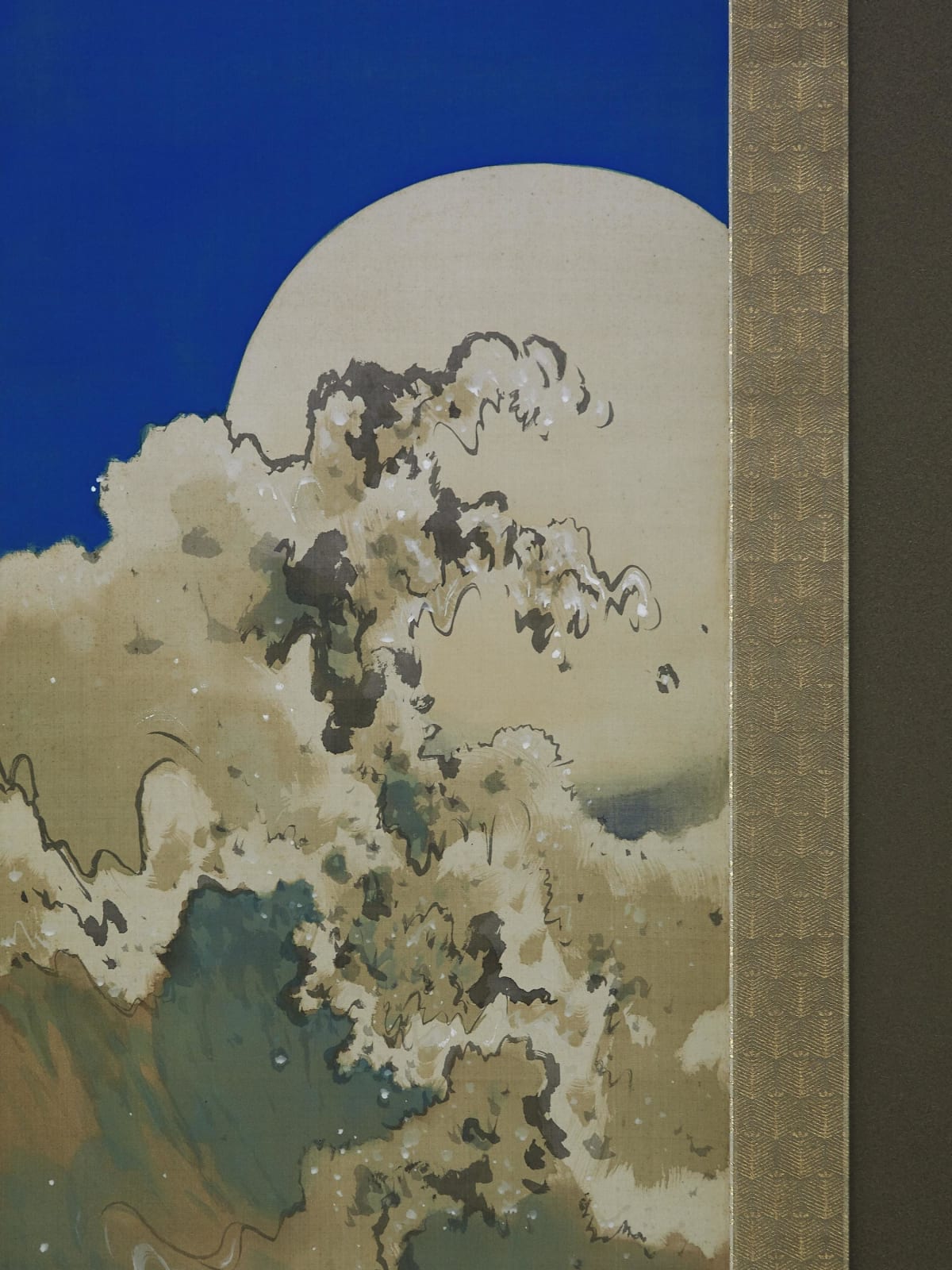Takeuchi Seihō (1864–1942)
White Hare
Color on silk, hanging scroll
With a Tokyo Art Club certificate, a box signed by the artist, double boxed
Seal: Takeuchi Tsune in
143.5 x 42.4 cm
226 x 56 cm (overall)
Further images
The title of this stylish work by Takeuchi Seiho refers to how the crest of the wave resembles a white hare as it leaps in front of the full moon. Seiho’s paintings of Mount Fuji or the sea often use a type of vivid ultramarine dubbed “Seiho blue.” Here, the color is used to drastic effect to depict the night sky lit by a blazing full moon. This has a twofold effect. Firstly, the lingering blue hue hints at the passing of time, with a clear, cloudless day having passed but midnight yet to arrive. Secondly, it also evokes images of the blue sea. The scene of waves crashing against the shore as white foam leaps into the air is reminiscent of the Sea of Japan in mid-winter. For many, the combination of the shore of the Sea of Japan and a hare brings to mind the White Hare of Inaba, a myth from Japan’s Izumo region about a hare and some sharks. It is unclear which scene from this well-known story Seiho had in mind, but the section of wave overlapping the moon resembles the hind legs of a hare springing toward the left, so perhaps the enjoyment of this piece is enhanced by imagining the hare leaping over the backs of the sharks he has just deceived.
Takeuchi Seiho (nihonga painter; 1864–1942)
Also known as Kachu-an.
Kyoto-born nihonga painter. His real name is Tsunekichi. Studied under Tsuchida Eirin and Kono Bairei. Graduated from the Kyoto Prefecture Painting School. Generally recognized as the three great masters of the Japanese modern art with Yokoyama Taikan and Kawai Gyokudo. Made immense contribution to the modernization of nihonga both through the abundant masterworks he left and the numerous outstanding artists he educated. Appointed Kyoto Municipal Special School of Painting professor, and Bunten jury member. Received the Order of Culture.
Takeuchi Seiho (nihonga painter; 1864–1942)
Also known as Kachu-an.
Kyoto-born nihonga painter. His real name is Tsunekichi. Studied under Tsuchida Eirin and Kono Bairei. Graduated from the Kyoto Prefecture Painting School. Generally recognized as the three great masters of the Japanese modern art with Yokoyama Taikan and Kawai Gyokudo. Made immense contribution to the modernization of nihonga both through the abundant masterworks he left and the numerous outstanding artists he educated. Appointed Kyoto Municipal Special School of Painting professor, and Bunten jury member. Received the Order of Culture.









